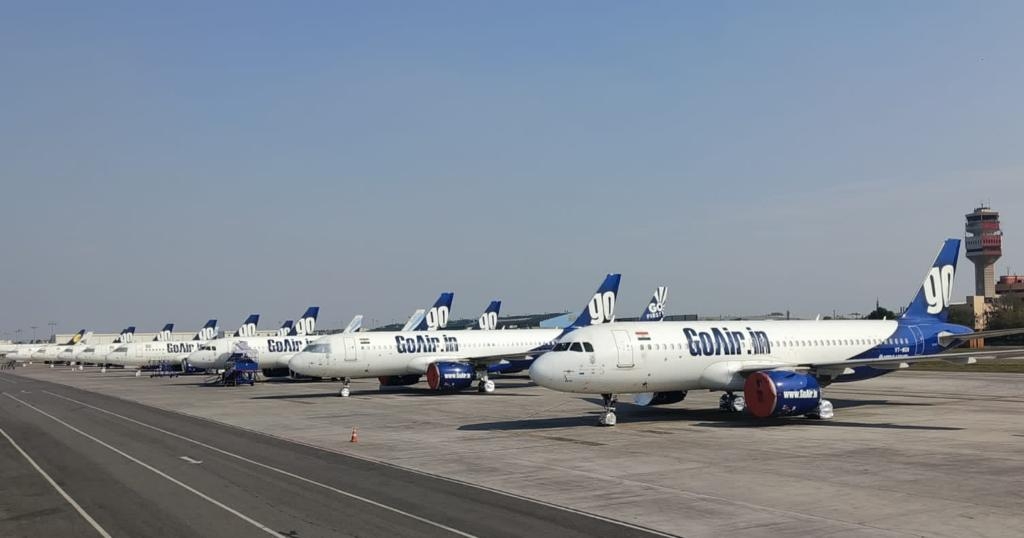Chennai, May 6 (IANS) Shoot and scoot seems to be the communication policy being adopted by the two warring groups in the aviation sector – Indias Go Airlines (India) Ltd and the US aircraft engine maker Pratt & Whitney.
Incidentally, Pratt & Whitney India is headed by Ashmita Sethi, who was earlier the Vice President Communications and Public Affairs, South Asia, for Rolls Royce and Director, Communications and Corporate Affairs at Boeing as per her LinkedIn page.
In times of crisis, the principle to be followed is communicate, communicate and communicate is what communication gurus advocate.
But the two companies do not adhere to that and remain silent to questions from IANS and the media but resort to shoot and scoot strategy.
It was the Wadia group’s Go Airlines which fired the first shot blaming Pratt & Whitney for its decision to file a voluntary petition for insolvency with the National Company Law Tribunal (NCLT) Delhi under Section 10 of the Insolvency Bankruptcy Code (IBC).
The airline said that it has approached the NCLT “due to the ever-increasing number of failing engines supplied by Pratt & Whitney’s International Aero Engines, which has resulted in Go First (airline brand) having to ground 25 aircraft (equivalent to approximately 50 per cent of its Airbus A320neo aircraft fleet) as of May 1, 2023.”
“The percentage of grounded aircraft due to Pratt & Whitney’s faulty engines has grown from 7 per cent in December 2019 to 31 per cent in December 2020 to 50 per cent in December 2022. This is despite Pratt & Whitney making several ongoing assurances over the years, which it has repeatedly failed to meet,” Go Airlines said.
Go Airlines had said it has been forced to apply to the NCLT after Pratt & Whitney, the exclusive engine supplier for its Airbus A320neo aircraft fleet, refused to comply with an award issued by an emergency arbitrator appointed in accordance with the 2016 Arbitration Rules of the Singapore International Arbitration Centre (SIAC).
The airline’s decision to apply for insolvency blaming the engine supplier has taken its lenders, creditors, staff and others entirely by surprise.
Perhaps, Go Airlines is the first airline to blame the engine maker for its financial woes.
With Go Airlines tight lipped some are even wondering whether blaming the engine supplier for its woes is a strategy to get a huge loan waiver.
Be that as it may, on Saturday, Go Airlines issued a summary of technical issues it faced with Pratt & Whitney GTF engines.
The airlines said “Airbus certified two engines to power the new A320neo: Pratt’s PurePower PW1127G-JM engine, and a CFM engine. Pratt & Whitney touted itself as the next generation engine, with the expectation that each Engine would have a lifespan of approximately 15,300 hours on wing before its first full interval shop visit (“FISV”). The expected lifespan of the Engines was an important consideration for GoFirst to go ahead with Pratt & Whitney engines.”
According to Go Airlines, these Engines were understood to have new technology that would be more fuel efficient, produce less noise and be more environmentally friendly and would have lower expected maintenance costs.
“Moreover, Pratt offered better commercial terms compared to its competitor which included financing via their affiliate (UTF) for the Pre Delivery Payments,” the airline added.
Go Airlines said from day one the Pratt & Whitney engines were problematic and has been an industry wide issue.
“The teething problems continue even after so many years clearly indicates an inherent design problem. These GTF engines were developed on an unproven, new’ technology platform prematurely tested and forced into the market to capture airline attention with performance stats that were never achieved,” Go Airline charged.
“Pratt & Whitney engine issues are nowhere related to supply chain challenges as Supply chain issues occur when a product is reliable, robust, functional, and in high demand,” the airline added.
“The engine problems included issues with the Engines’ software, start-up times, starter, main gear box, and fan blades, but the key issues were with the combustor (i.e., there was erosion in the combustion chambers, known as combustor distress’),” Go Airlines said.
“Between 2016 and February 2023, GoFirst carried out 510 GTF Engine removals: 289 Engine Changes as a result of at least 28 different defects, and 221 Engine Swaps,” the airline said in its note.
According to Go Airlines, 15% of total Pratt & Whitney GTF powered aircrafts are grounded because of faulty engines globally (178 aircrafts are grounded out of 1,219 aircrafts as of March 2023).
The most affected region is India with 65 grounded aircrafts out of 178 aircrafts. Out of 60 global customers, only 4 customers have grounded aircrafts in excess of 25 per cent and 2 of them are Indian customers.
“Pratt & Whitney’s recent proposal whereby they proposed to give 5% of induction slots to Go First despite AOG’s at 54 per cent is hard to believe and is a deliberate attempt to kill Go First,” the airline charged.
On their part, a spokesperson of Pratt & Whitney told IANS: “Go First has a lengthy history of missing its financial obligations to Pratt,” a spokesperson for the aircraft engine supplier Pratt & Whitney responded to the IANS list of questions.
However, the official declined to elaborate further on its allegation against Go Airline.
“Pratt & Whitney is committed to the success of our airline customers, and we continue to prioritize delivery schedules for all customers. P&W (Pratt & Whitney) is complying with the March 2023 arbitration ruling related to Go First. As this is now a matter of litigation, we will not comment further,” Pratt & Whitney spokesperson said.
And nothing was heard after that from the global aircraft engine maker.
(Venkatachari Jagannathan can be reached at v.jagannathan@ians.in)

